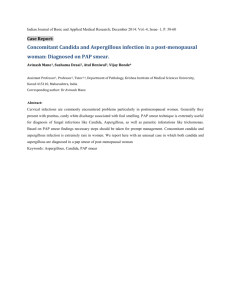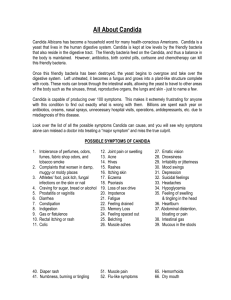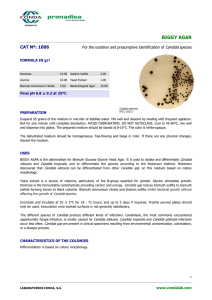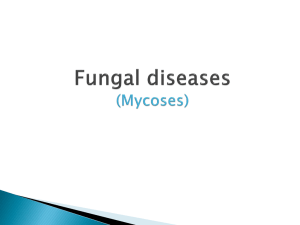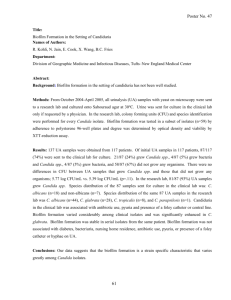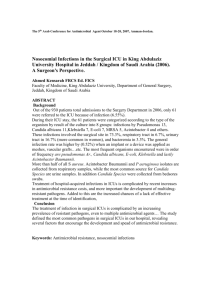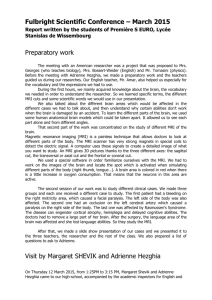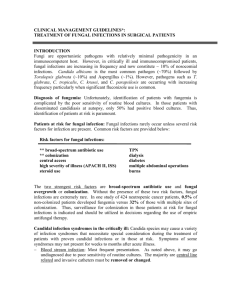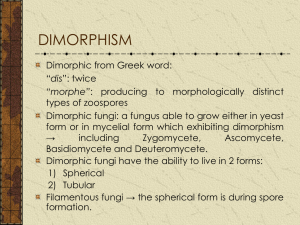Candida Infections - Alpine Animal Hospital
advertisement
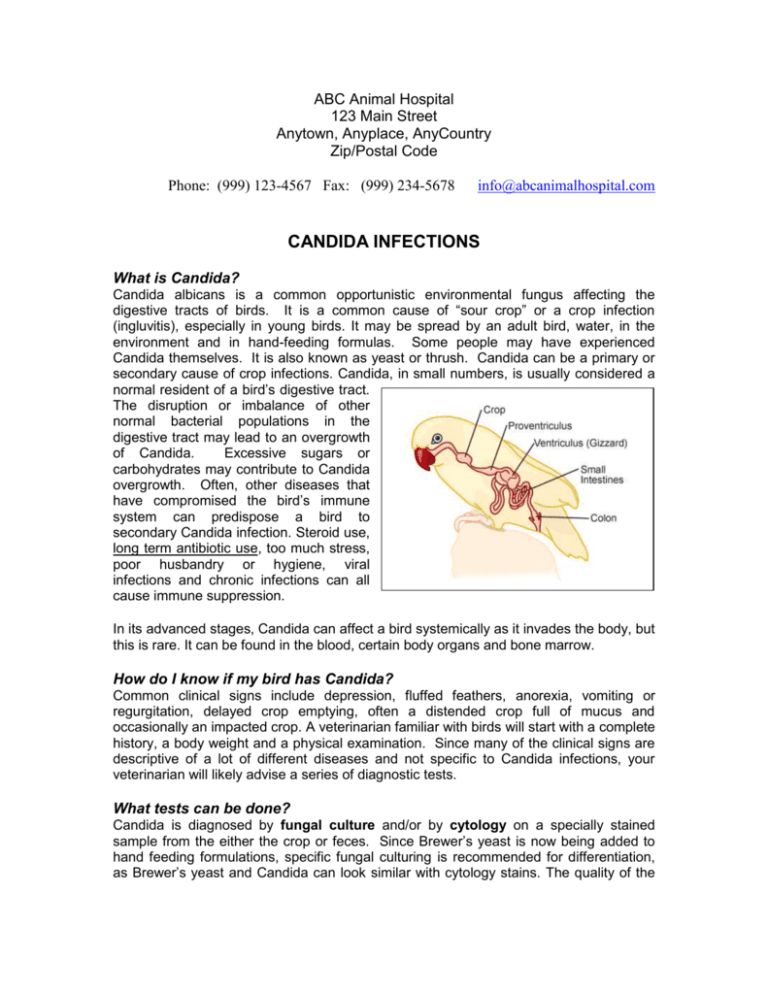
ABC Animal Hospital 123 Main Street Anytown, Anyplace, AnyCountry Zip/Postal Code Phone: (999) 123-4567 Fax: (999) 234-5678 info@abcanimalhospital.com CANDIDA INFECTIONS What is Candida? Candida albicans is a common opportunistic environmental fungus affecting the digestive tracts of birds. It is a common cause of “sour crop” or a crop infection (ingluvitis), especially in young birds. It may be spread by an adult bird, water, in the environment and in hand-feeding formulas. Some people may have experienced Candida themselves. It is also known as yeast or thrush. Candida can be a primary or secondary cause of crop infections. Candida, in small numbers, is usually considered a normal resident of a bird’s digestive tract. The disruption or imbalance of other normal bacterial populations in the digestive tract may lead to an overgrowth of Candida. Excessive sugars or carbohydrates may contribute to Candida overgrowth. Often, other diseases that have compromised the bird’s immune system can predispose a bird to secondary Candida infection. Steroid use, long term antibiotic use, too much stress, poor husbandry or hygiene, viral infections and chronic infections can all cause immune suppression. In its advanced stages, Candida can affect a bird systemically as it invades the body, but this is rare. It can be found in the blood, certain body organs and bone marrow. How do I know if my bird has Candida? Common clinical signs include depression, fluffed feathers, anorexia, vomiting or regurgitation, delayed crop emptying, often a distended crop full of mucus and occasionally an impacted crop. A veterinarian familiar with birds will start with a complete history, a body weight and a physical examination. Since many of the clinical signs are descriptive of a lot of different diseases and not specific to Candida infections, your veterinarian will likely advise a series of diagnostic tests. What tests can be done? Candida is diagnosed by fungal culture and/or by cytology on a specially stained sample from the either the crop or feces. Since Brewer’s yeast is now being added to hand feeding formulations, specific fungal culturing is recommended for differentiation, as Brewer’s yeast and Candida can look similar with cytology stains. The quality of the sample is very important. If a sample is negative, it may be that deeper samples or tissue scrapings are needed. It is common for Candida to show up secondary to another disease process, therefore other tests should be done to determine other predisposing problems affecting the bird. Early diagnosis leads to faster resolution of the underlying problem. Can my bird be treated? Yes, once diagnosed, Candida is treated with antifungal medications. There are a number of different medications available. In addition to treating the Candida, it is critical to resolve all predisposing factors or diseases. Good hygiene, a clean environment and fresh, clean food items will help manage this problem and maintain your bird’s health. It is important to closely follow the recommendations of your veterinarian. This client information sheet is based on material written by Rick Axelson, DVM & Shawn Messonier, DVM © Copyright 2005 Lifelearn Inc. Used with permission under license. February 12, 2016
